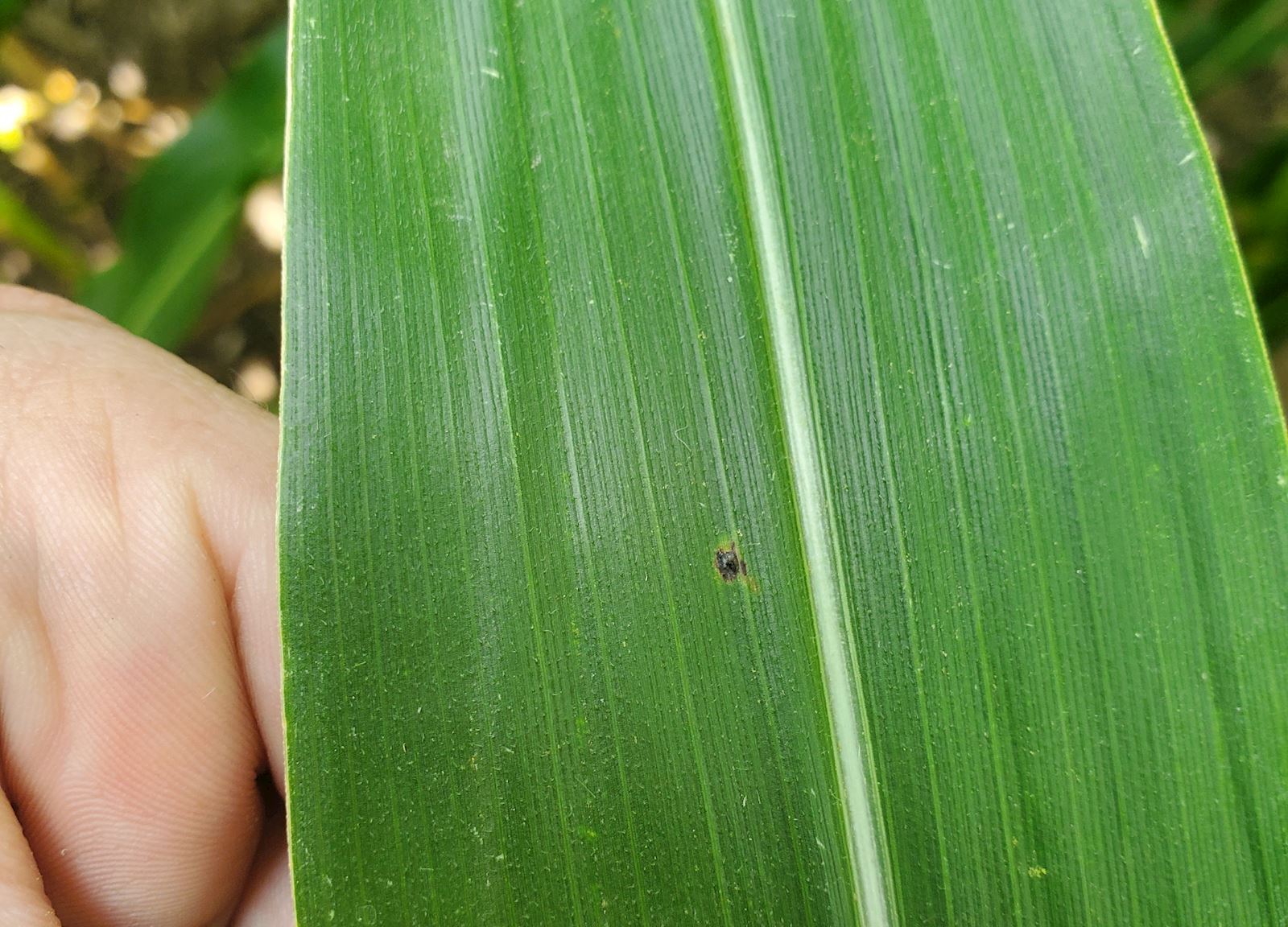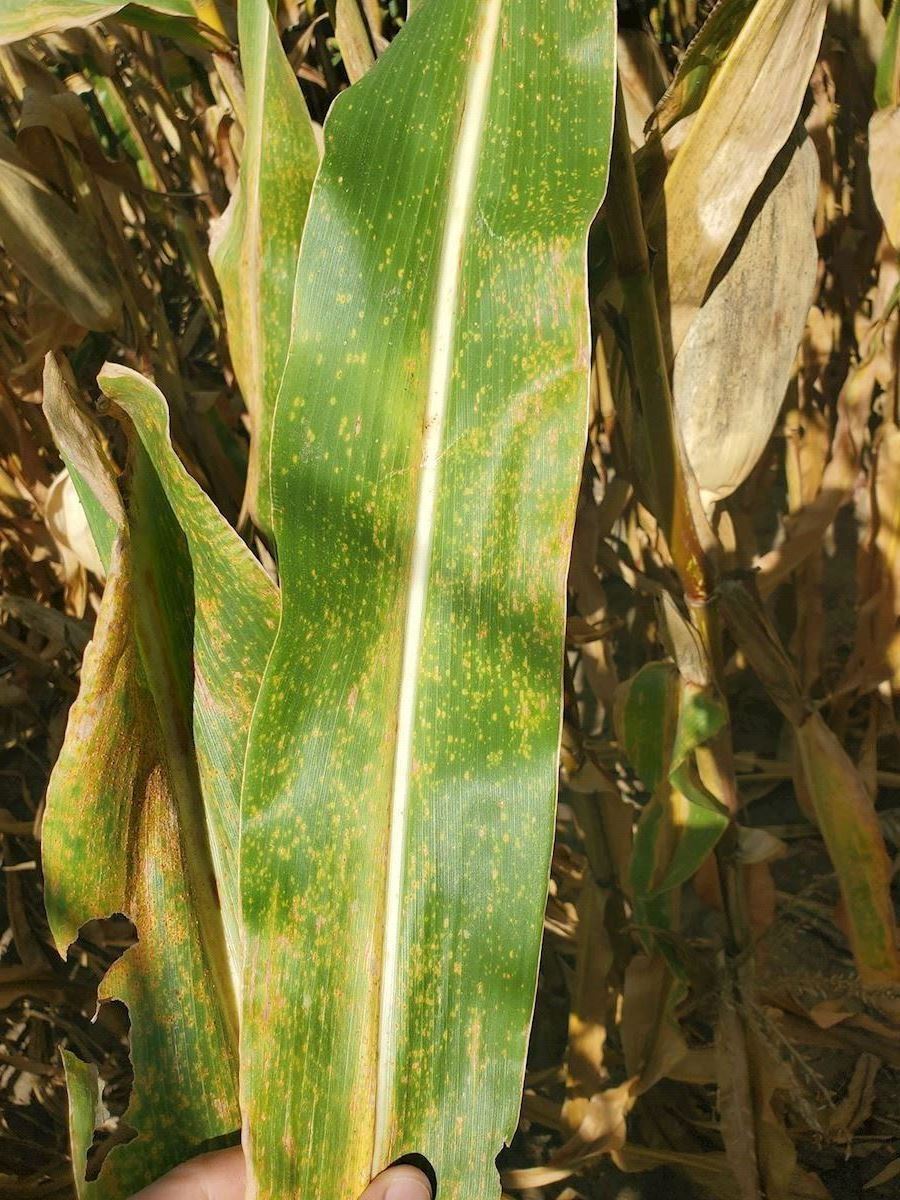August 19th, 2022
posted
by Andrew Blomme on 8/19/2022
in
Weekly Newsletter

August 19th, 2022
Combatting Tar Spot
I continue to find tar spot in corn fields in northern Audubon County and southern Carroll County. In the vast majority of fields, tar spot pressure is very light and shouldn't cause concern at the moment. Typically I am finding 1-4 tar spot lesions on a couple leaves per plant as the picture below shows.

While pressure is light right now, things can change quickly. Our peers in eastern Iowa and Illinois share horror stories about how aggressively this disease can spread throughout a field. The picture below shows tar spot pressure in a field in Audubon County from last September. Time will tell if we see pressure this intense this year.

Tar spot may become a yearly occurrence in the area. With that in mind we need to evaluate ways to control this disease. This year we are looking at an R3 fungicide application as a method of tar spot control. We targeted several fields with early tar spot development and then sprayed Approach Prima in strips with a drone. The trial strips will be compared with the untreated sections of the farm for tar spot severity and ultimately, yield. I will share the results of these trials when we have the data.
The video below is footage of the drone spraying one of these trials. It is pretty interesting piece of technology that will become more common in agriculture.
Monday's Moisture
Monday brought some much needed rainfall to the area. With rainfall measuring over an inch I've received a lot of questions on if this rainfall will help this crop or if its too late. The best answer is that it depends.
Starting with the beans, it really depends on the maturity of the bean. For example, we will start to see fields of 19EC32's and other early maturity beans senesce and start to brown in the next 7 days. Those fields have very little window to utilize this moisture. On the other hand later maturity beans like the 28EC32 still have a couple weeks before reaching R7. There is still an opportunity to convert flowers on the top couple of nodes to pods and fill those pods with beans.
The past several years we haven't seen a statistical yield difference between early maturity beans and later maturity beans. This year with the rain on August 14, we may see a yield difference in favor of the later maturity beans.
For the corn, this moisture may have a positive influence on grain fill and test weight. Corn in the area ranges from R3 (Milk) to the beginning of R5 (Dent). Intuitively, we can say that the corn that is still R3 will utilize this moisture more so than the fields that are R5. Because of this, we may see some yield impacts from planting date in favor of the corn planted later. There are a couple situations this year where the same hybrid was planted in neighboring fields planted 10-14 days apart. We should be able to quantify if planting date and this late rainfall made a yield impact.
We are approaching the finish line on this crop. That being said there are still factors at work that will influence our yield. We will continue to keep you up to date on that and more in subsequent newsletters.